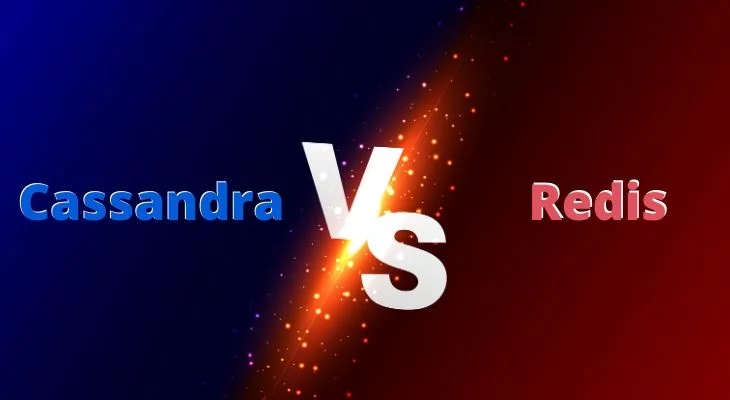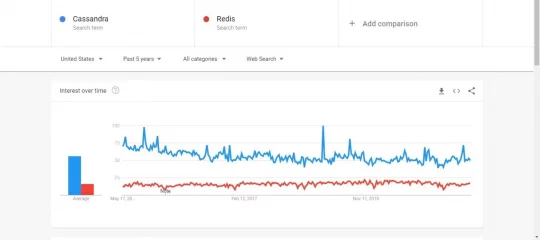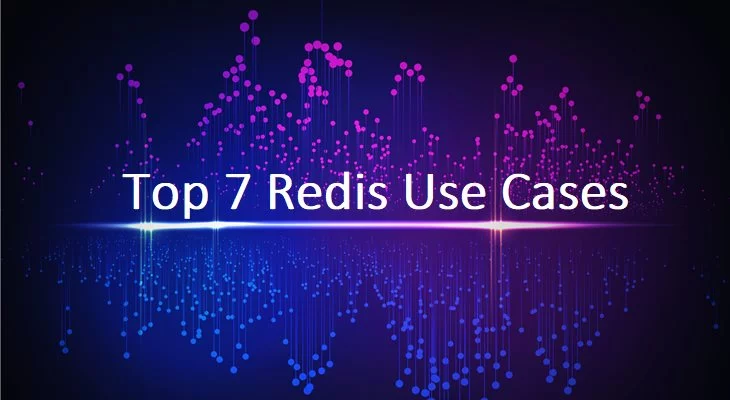The rise in big data forced the companies to move away from conventional, structured platforms to the NoSQL platforms. Redis and Cassandra are both one of the prominent NoSQL tools. Both platforms are quite popular. We will be comparing Cassandra and Redis through this blog with different parameters. These parameters include popularity, type of technology, speed, and many more.
What is Cassandra?
Cassandra is an open-source NoSQL database tool developed by Apache. It is primarily aimed at handling huge databases. It works on HiveQL syntax, and that gives it more consistency.
What is Redis?
Redis is an open-source NoSQL database developed by Salvatore Sanfilippo and sponsored by Redis Labs. It closely follows Hadoop architecture, and that gives it more availability.
Cassandra vs. Redis: 7 Key Points of Comparison
As we can see from the above-mentioned graph, Cassandra is a lot more popular than Redis. It is searched quite heavily as compared to Redis over the last five years in the United States.
Cassandra uses a wide-column store as a primary database model, making it easy to store huge databases. The wide-column store acts as a two-dimensional key-value store as the record keys are not fixed in this model.
While on the other hand, Redis uses a key-value store as a primary database and that helps the tool to be more dynamic and handle varying datasets. It is also used as a message broker process, and queuing process.
Cassandra is more focussed on giving you stability, and hence like SQL, you can store huge data sets. But, it is slower in speed than that of Redis.
Redis is much faster than Cassandra, but it gets slower if you use it for huge data sets and is ideally suited for rapidly changing datasets.
Also Read: Top 7 Use Cases of Redis
Cassandra focuses on CP (Consistency, Partition Tolerance) of CAP (Consistency, Availability, and Partition Tolerance) theorem. It makes it a more favorable alternative in the financial services domain.
On the other hand, Redis focuses on AP (Availability, and Partition Tolerance) part of CAP (Consistency, Availability, and Partition Tolerance) theorem. This makes the tool more useful in dynamically changing database solutions like real-time analytics or data analytics.
Cassandra works on java programming, it is schema-free, and it uses thrift protocol for API fetching.
But, Redis works on C programming. It is also schema-free, and it uses the telnet protocol for API and other fetching tactics.
Cassandra is more useful when you have distributed, linearly scalable, write-oriented, and democratic peer to peer database or data structure. Hence it is used more in transaction logging, health care data storage, telematics for automotive, and weather services.
Redis is more useful when you have in-memory data storage, vertically scalable, and read-oriented data structure and dynamic database.
Hence it is used more in session caching, queuing, counting, publish-subscribe pattern, and in full-page caching. Redis is more useful when you have in-memory data storage, vertically scalable database.
Also, it is useful when the database is read-oriented & dynamic. Hence it is used more in session caching, queuing, counting, publish-subscribe pattern, and in full-page caching.
Cassandra is used by many renowned companies like Reddit (for storage) and Constant Contact (for their email applications). It is also used by Nutanix (for Metadata storage), and Netflix (back-end database).
Redis is also a popular tool, and it is used by some major companies like Staples (for fast response) and Udemy (to increase its reach with zero down-time). It is also used by Invonics (for analytics), and Utilitywise (for faster performance).
Cassandra vs. Redis vs. MongoDB
MongoDB differs from Cassandra and Redis in terms of a primary database as it uses the document store. MongoDB is written in C++, while Cassandra is written java and Redis in C.
MongoDB stores data in JSON format while Redis stores in key-value stores and Cassandra in a wide-columns store. MongoDB scales lot easier than either Redis or Cassandra. MongoDB also allows more flexibility than Redis and Cassandra.
Key Takeaways:
From our comparison, we can say that both the tools have their pros and cons. Cassandra is more useful when you have huge but static data, while Redis is more useful when the data is dynamic and the data is not too large.
Also Read: Detailed Comparison of Redis Against MongoDB






